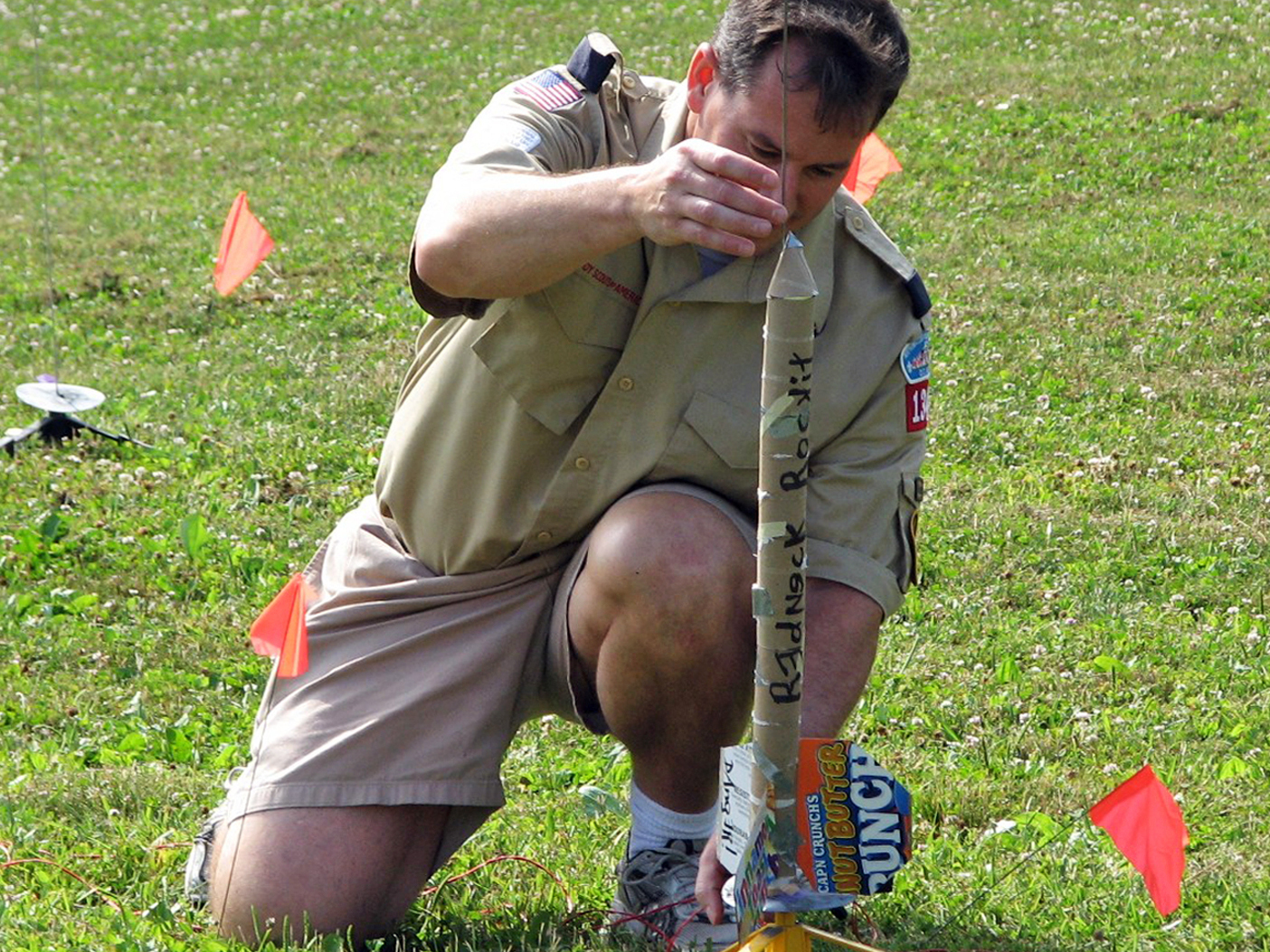The HeliRocket is propelled by a standard model-rocket engine, but instead of the engine’s ejection charge deploying a parachute, it releases the rocket’s 3 tail fins. The fins then swing up into a helicopter blade configuration, which slows the rocket’s descent by converting much of its kinetic energy into drag and angular momentum (spin).
Some commercial kits enable a similar “spin recovery,” but they use separate helicopter blades. Having the tail fins perform double duty makes for a cool “transformer” effect and reduces rotational drag for faster spinning. Using household items, you can build this rocket for nothing more than the cost of the engine. (To fire it, you’ll also need a launchpad, with either a fuse or a launch controller and igniter.)


